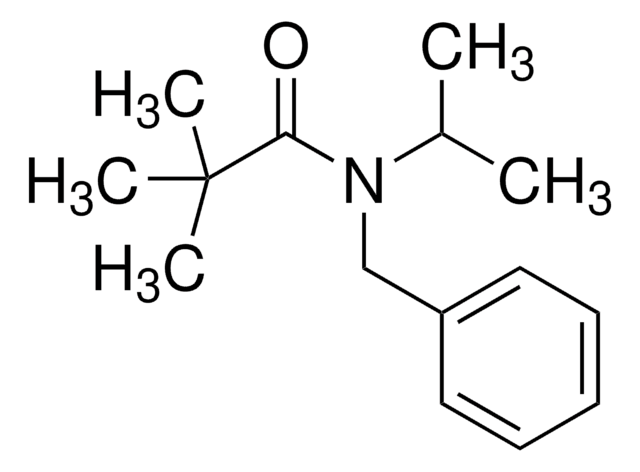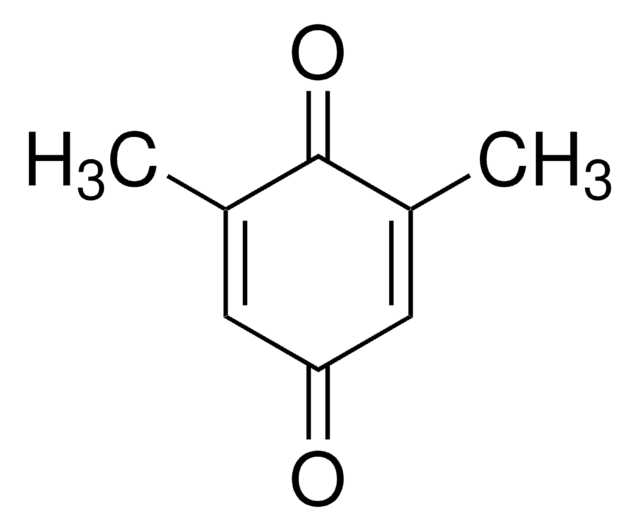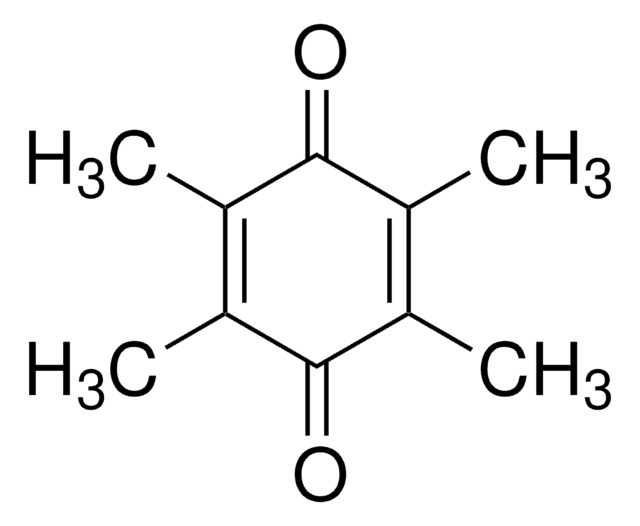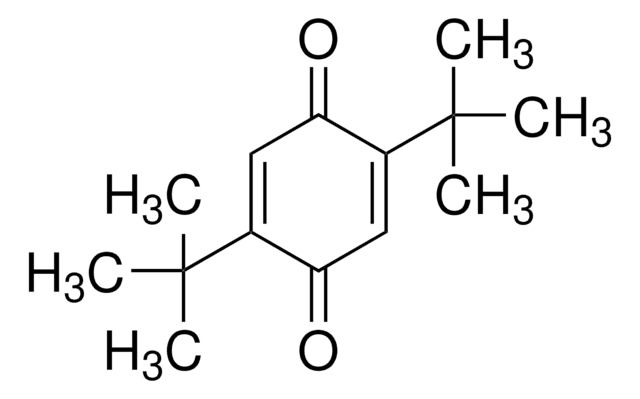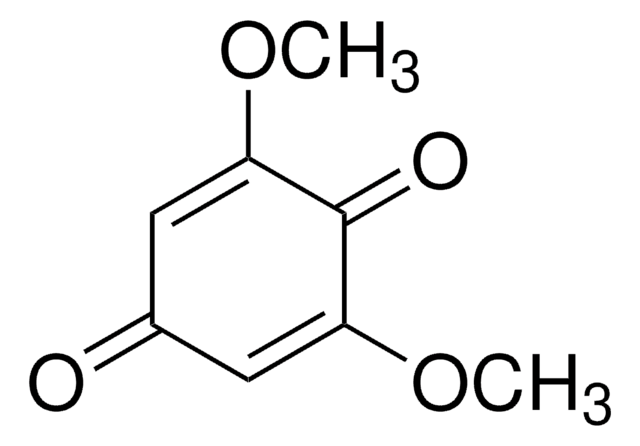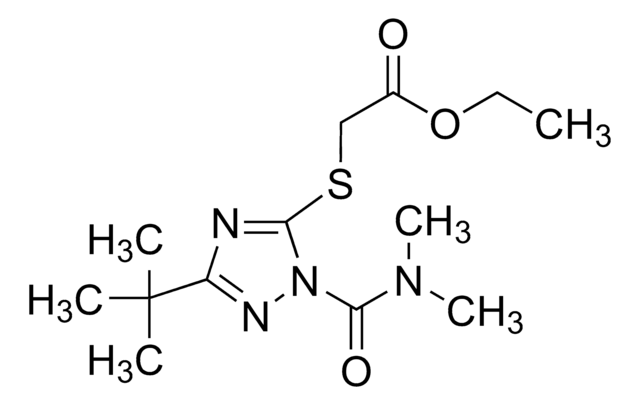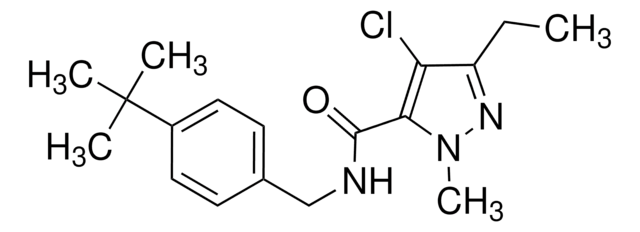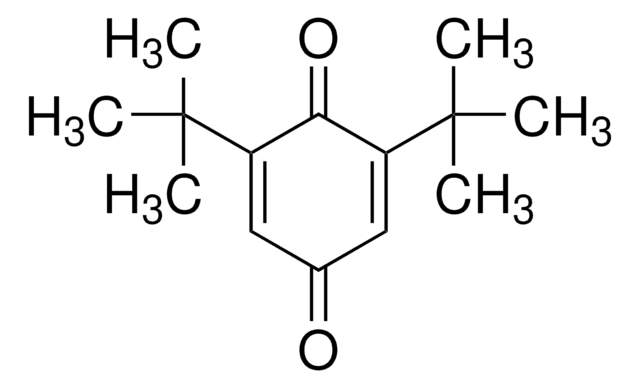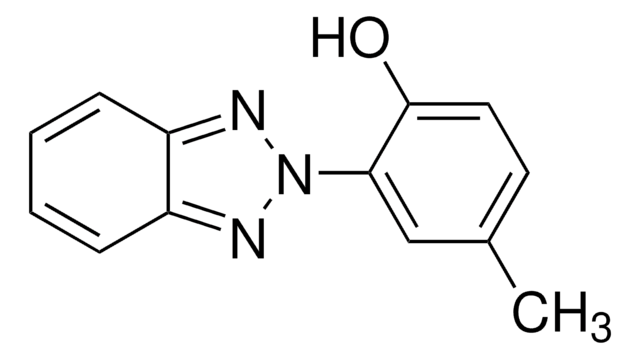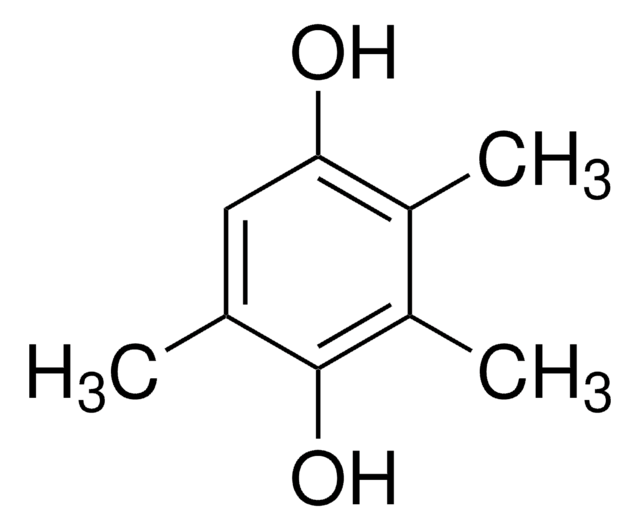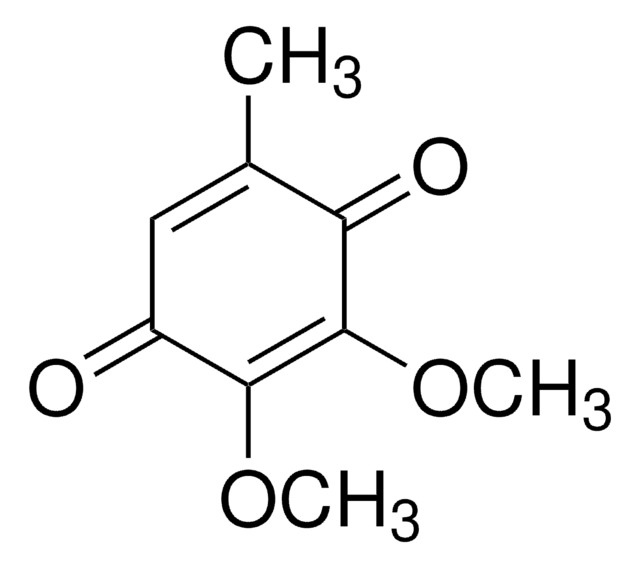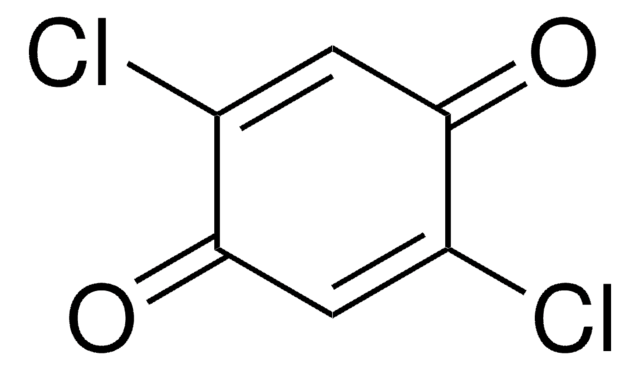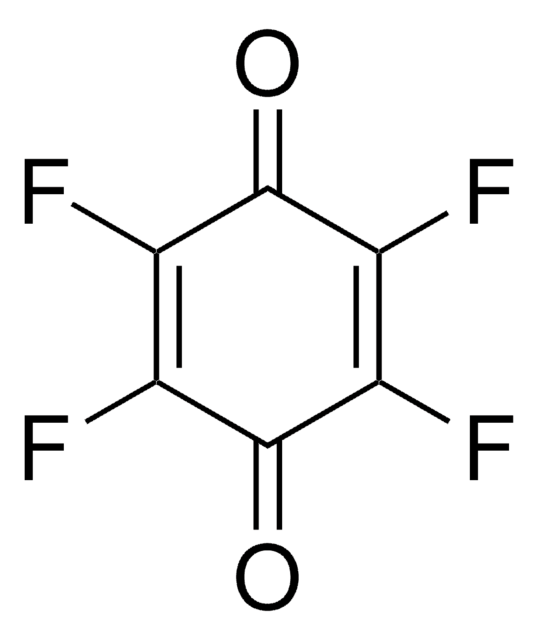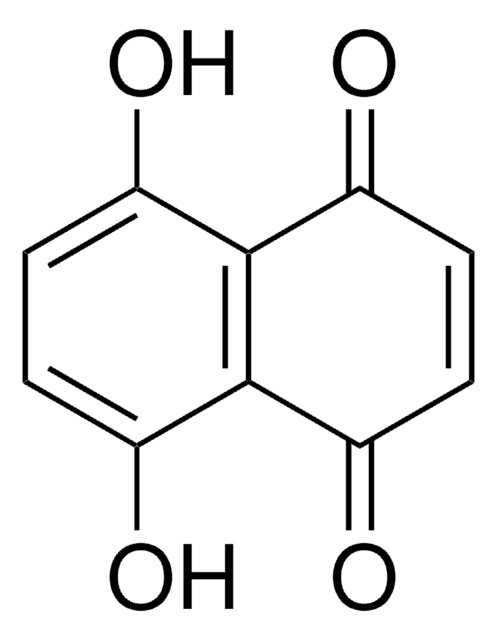39579
2,5-Dimethyl-1,4-benzoquinone
≥98.0%
Synonyme(s) :
2,5-Dimethyl-2,5-cyclohexadiene-1,4-dione, 2,5-Dimethyl-p-benzoquinone, 2,5-Dimethyl-p-quinone, 2,5-Dimethylbenzoquinone, 2,5-Xyloquinone, 3,6-Dimethyl-p-benzoquinone
About This Item
Produits recommandés
Essai
≥98.0%
Pf
123-125 °C
Solubilité
toluene: soluble 0.5 g/10 mL, clear to faintly turbid, yellow to brown
Groupe fonctionnel
ketone
Chaîne SMILES
CC1=CC(=O)C(C)=CC1=O
InChI
1S/C8H8O2/c1-5-3-8(10)6(2)4-7(5)9/h3-4H,1-2H3
Clé InChI
MYKLQMNSFPAPLZ-UHFFFAOYSA-N
Description générale
Application
Mention d'avertissement
Danger
Mentions de danger
Conseils de prudence
Classification des risques
Acute Tox. 3 Oral - Eye Irrit. 2 - Skin Irrit. 2 - STOT SE 3
Organes cibles
Respiratory system
Code de la classe de stockage
6.1C - Combustible acute toxic Cat.3 / toxic compounds or compounds which causing chronic effects
Classe de danger pour l'eau (WGK)
WGK 3
Point d'éclair (°F)
Not applicable
Point d'éclair (°C)
Not applicable
Équipement de protection individuelle
dust mask type N95 (US), Eyeshields, Faceshields, Gloves
Faites votre choix parmi les versions les plus récentes :
Déjà en possession de ce produit ?
Retrouvez la documentation relative aux produits que vous avez récemment achetés dans la Bibliothèque de documents.
Les clients ont également consulté
Notre équipe de scientifiques dispose d'une expérience dans tous les secteurs de la recherche, notamment en sciences de la vie, science des matériaux, synthèse chimique, chromatographie, analyse et dans de nombreux autres domaines..
Contacter notre Service technique